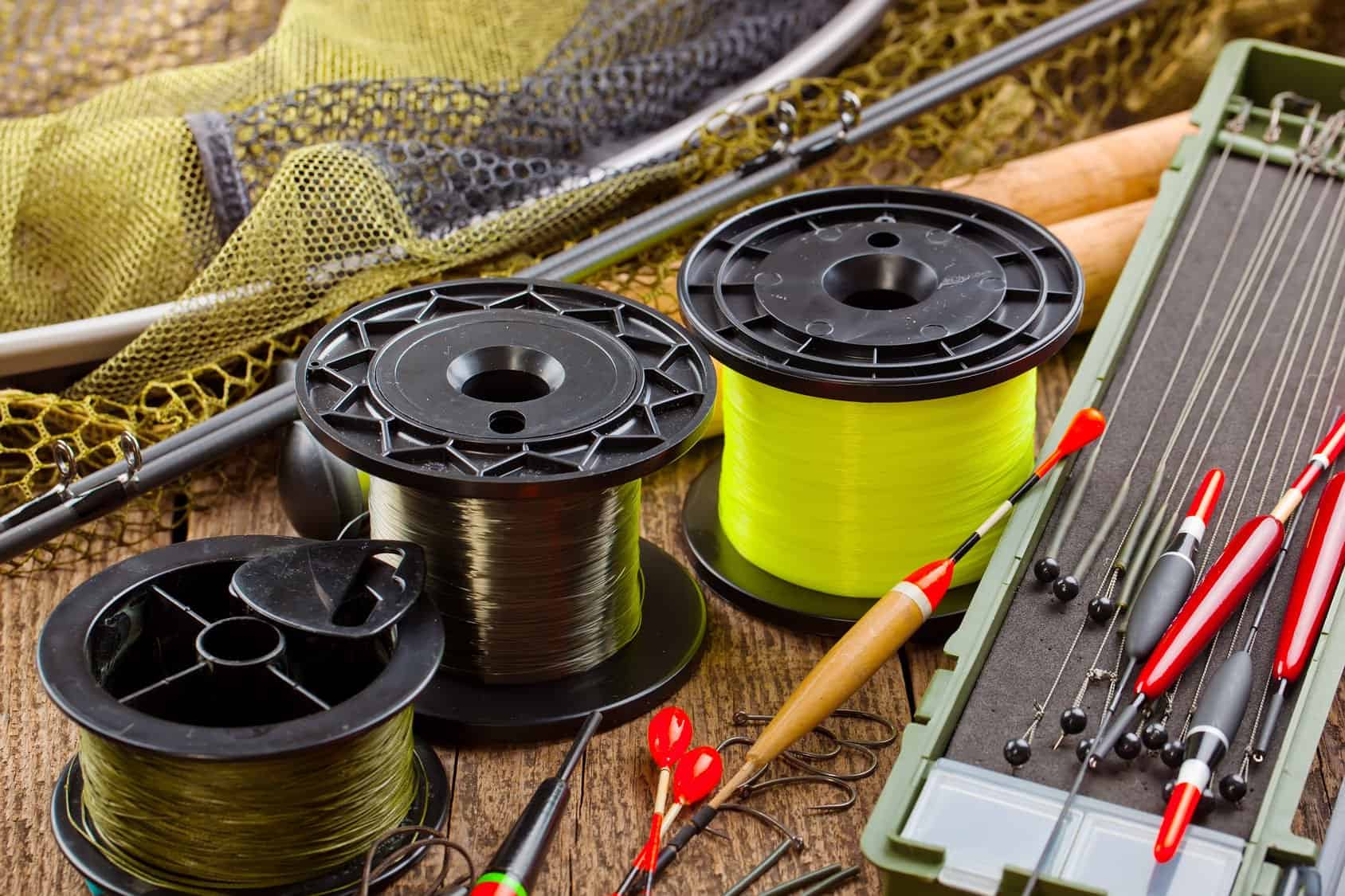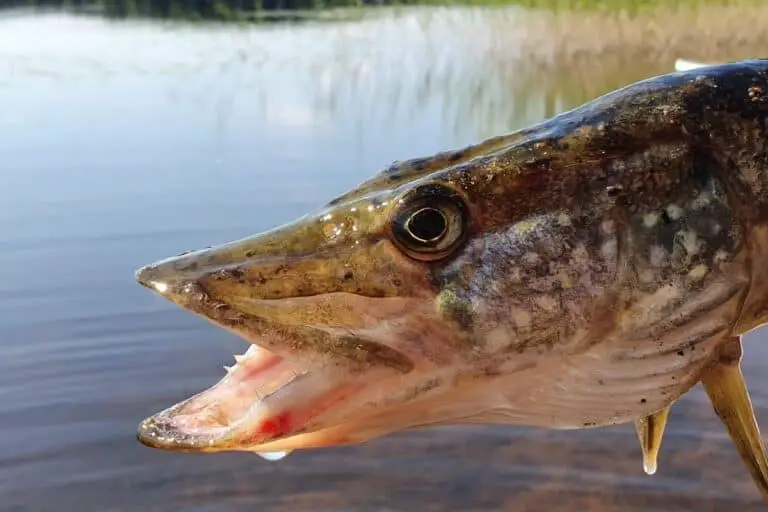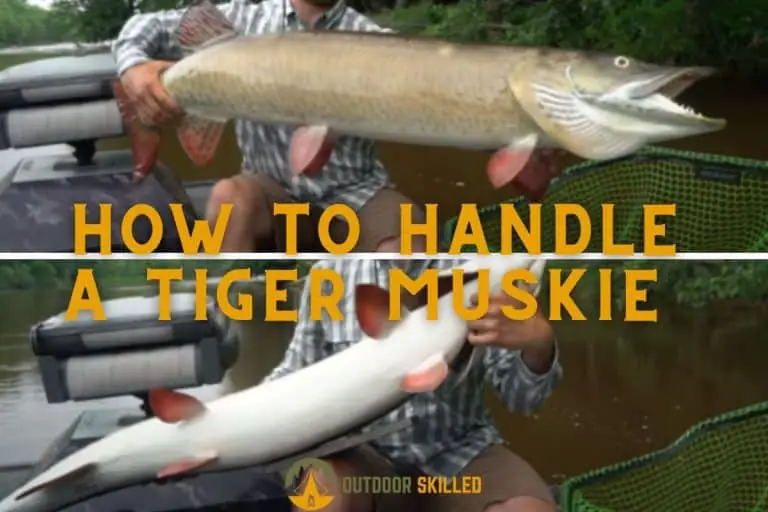Braided vs. Fluorocarbon Fishing Lines
Part of becoming a more experienced angler is expanding your gear along the way. You will have to include different fishing lines in your gearbox when you adopt different fishing techniques and go after a broader spectrum of fish species.
We’re here to explore the differences and similarities between braided and fluorocarbon lines. More importantly, we’ll give you real-life applications to know when exactly to use either one of them.
Table of Contents
The Short Answer
Braided fishing lines are made for enthusiasts and professionals looking for the most robust line they can get their hands on. They offer excellent castability and sensitivity, all in a compact form factor that allows you to carry longer lines at a time.
On the other hand, fluorocarbon lines are more accessible and easier to use. They deliver decent strength and castability on top of an invisible stealthy profile underwater, all at a more affordable price.
Best Braided Fishing Lines in 2021 – Buyer’s Guide
Braided vs. Fluorocarbon: Which Fishing Line is Worth Your Money?
1. Braided
Floatability
Braided lines are slim and compact. Their form factor allows them to float or cut through the water column smoothly and reach considerable depths depending on how you use them.
Though braided lines can float, they are not the first option to pop in mind when it comes to topwater fishing. Their lack of stretchability and low shock-resistance make hooks snap easier when snatched by resilient fish species.
Nevertheless, braided lines can still be integrated brilliantly in topwater fishing. At long casting distances, the lack of stretchability is not an issue anymore.
In fact, it’s an advantage; it allows you to get more sensitivity from your line and feel what’s happening around your bait miles away. Also, the pull force will be distributed upon a longer line length, so hooks will not snap as easy.
On the other hand, if you want to attach a heavy bait to your line and aim for deep waters, braided lines allow you to do that as well. The weight of the bait can smoothly guide the line deep into the water, enabling you to catch fish species that lurk close to the bottom.
Read more about: Best Fluorocarbon Lines
Strength and Durability
In terms of strength, braided lines crush the competition. They deliver the most strength you can get from a fishing line. They are so strong that they can stop a swordfish. For that, they earned their well-deserved title of “super-lines.”
Make sure that your gear is compatible with braided lines; otherwise, your fishing equipment can get severely damaged. Braided lines can bury themselves into the spool. That’s why you need to get a braid-ready reel with a durable spool that can handle the line’s sharp edges.
Braided lines are also unlikely to get broken by most fish species, although fish with sharp teeth like muskie sometimes manage to escape. These lines can get ridiculously tough to the point that when they hang up, and it’s time to set the line loose, you have trouble cutting the line.
Tip: Clippers used to cut other lines don’t usually work on braided. Be prepared, and keep a pair of sharp scissors among your fishing gear.
Moreover, if you’re fishing in a spot with a lot of vegetation, braided lines come in handy. They cut through the stems of water plants like lily pads and cattails, allowing you to retrieve your catch smoothly. Other lines like fluorocarbon are not sharp enough, so they can tangle and make you lose your catch.
On top of that, they’re durable. They are resistant to sunlight damage, so you don’t need to worry about replacing them for a long time.
Best Ice Fishing Lines in 2021 – Buyer’s Guide
Diameter
Braided lines come in a considerably smaller diameter than the fluorocarbon ones bearing the same pound strength. The slimmer cross-section opens up a lot of possibilities. You can fit a larger line capacity in the same spool body you already have.
The extra line capacity allows you to reach considerable depths without the need to carry a bulky, heavy reel to fit the line length needed for deepwater fishing.
Sensitivity
Braided lines lack any stretchability, which can create its own set of drawbacks. However, line sensitivity will have a considerable boost.
The ideal case scenario for using braided lines involves casting at long distances. In such situations, you need all the sensitivity you can get, as the line will be your only clue if a fish is wandering around your bait.
Read more about: Best Fly Fishing Lines
https://outdoorskilled.com/best-fly-fishing-line
Knotability
Hands down, the biggest drawback to braided lines is the difficulty in retaining knots. Since they come in a smaller cross-section, they become challenging to handle when applying knots to the line.
Braided lines are also very slippery. No matter how much time or care you put into getting the knot right, it can get undone in a couple of seconds. It’s evident by now that these lines are not for everyone. Experienced anglers who mastered their knots can definitely have a smoother experience than beginners who are still trying to grasp the basics.
Tip: Consider wrapping your knot multiple times. Furthermore, don’t cut your line close to the knot; leaving a little bit of a tag end can be helpful when it comes to knot strength.
Some knots hold better than others. For example, the Palomar knot has good results with braided lines. Last but not least, some anglers apply super glue to their knots to be confident that it’s never going to slip.
Visibility
Another disadvantage to braided lines comes in terms of how easy they can be spotted underwater. You can work around this by using them in environments where they can’t be easily detected. For example, in low light situations, braided lines can be more effective.
Best Monofilament Lines in 2021 – Buyer’s Guide
Pros:
- Strong
- Excellent sensitivity
- No line memory
- Small diameter
- Larger line capacity
- Suitable for topwater and deepwater fishing
Cons:
- Slippery knots
- Visible underwater
- Not stretchable
- Hooks can snap off
- Expensive
Final Verdict
Braided lines are far from being the universal or most adopted fishing lines. However, they offer a unique set of features that are not found anywhere else. Here’s a list of all the pros and cons braided lines bring to the table.
2. Fluorocarbon
Floatability
Fluorocarbon lines have a dense form factor; that’s why they always sink. This allows them to be used for deepwater fishing, just like braided lines. But, unlike braided, they can’t be used for topwater fishing.
Strength and Durability
When it comes to strength, fluorocarbon lines are considered the mid-tier option among other fishing lines on the market. They offer decent strength that can be boosted all the way to braided lines’ strength level at the cost of a larger diameter.
Fluorocarbon delivers great abrasion-resistance that gives you peace of mind when pulling your catch from heavy cover with a lot of sharp surfaces that can otherwise damage the line.
Moreover, you can expect the same resistance to environmental wear and tear you find in braided lines. Fluorocarbon lines are resistant to UV rays, and they offer excellent durability.
Diameter
When comparing lines of the same strength, fluorocarbon ones will always have a bigger diameter than their braided counterparts.
The lines’ diameter affects their castability. Braided lines are smoother to cast and travel for longer distances. Though fluorocarbon fishing lines come with a larger diameter, they are still manageable, and their footprint doesn’t go as big as other line options.
Read more about: Best Bass Fishing Lines
The maximum line capacity a spool can pack is significantly affected by the line’s diameter. So, you’d expect that the same spool can carry a greater length of braided than fluorocarbon lines.
Sensitivity
Unlike braided, fluorocarbon lines are stretchable to some degree. You don’t have to worry about hooks snapping off, as fluorocarbon lines have some “give” to them. They only stretch under high pressures, so you don’t trade-off sensitivity under most circumstances.
Fluorocarbon lines get the best of both worlds; they offer sensitivity together with some room to stretch and deliver shock resistance.
Knotability
Fluorocarbon is considered one of the stiff lines on the market, but when compared to braided, it’s much more manageable. Knots are not as slippery, and the line itself is not hard to cut. This all delivers a better experience when it comes to applying knots.
Fluorocarbon has a significant line memory that can take a lot of time to loosen. Line memory is what happens when your line is crammed in the spool for a long time. It will then curl and decrease your casting distance. Also, it becomes more prone to tangles.
Visibility
Fluorocarbon’s relative invisibility underwater gives it the edge over braided. As fluorocarbon has a comparable refractive index to that of water, it allows light to pass through.
Clearwater fishing is the one area where braided lines fall short. Fortunately enough, fluorocarbon lines deliver a viable alternative thanks to their stealthy profile underwater.
Best Trout Fishing Lines in 2021 – Buyer’s Guide
Pros:
- Suitable for deepwater fishing
- Excellent invisibility and sensitivity
- Abrasion-resistant and durable
Cons:
- Larger diameter
- Line memory
- Can’t be used for topwater fishing
Final Verdict
Fluorocarbon lines are unique for their invisibility underwater. You can review their complete list of pros and cons before you finalize your purchase decision.
FInal Thoughts
The differences between fluorocarbon and braided lines outweigh their similarities. It’s clear that each line is made for different anglers with different sets of skills and needs.
If you can integrate both lines in your setup, go for it. You will get a complete package with features from both lines, without the disadvantages every line has on its own.
Consider using a fluorocarbon leader for its invisibility underwater and the relative ease of applying knots, while the rest of the spool can be packed with a braided line for its strength, smaller diameter, larger line capacity, and longer casting distance.






![Why Are Bass Boats So Fast? [Simply Explained]](https://outdoorskilled.com/wp-content/uploads/2021/11/bass-boat-speeding-768x512.jpeg)
